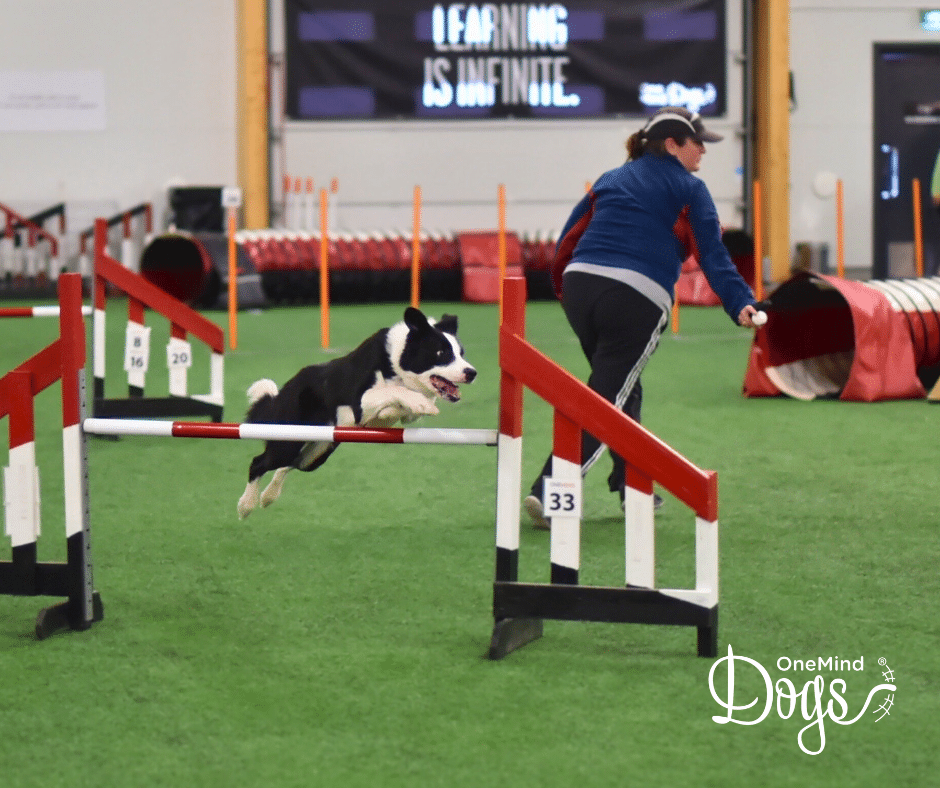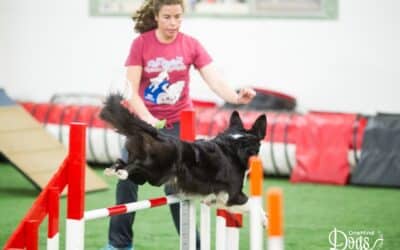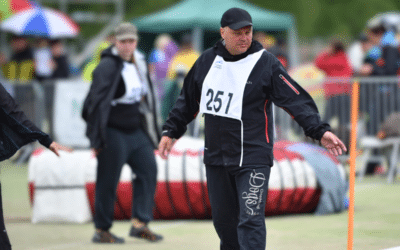In dog agility training, the trust you place in your dog is a reflection of the training you’ve both undergone. Consistent and effective agility training builds this trust, enabling your dog to confidently navigate courses during competitions. The more diverse and challenging the training, the stronger your trust will be in your dog’s ability to perform.
What is trust in dog agility?
Trust in this context means believing that your dog will respond as trained when given specific cues or faced with specific sequences. It’s about consistency and reliability in their responses, which can be complicated by a natural tendency to humanize a dog’s behavior.
Sports psychologist Vappu Alatalo says “Trust seems to be one of those concepts, where there is often a mix up between human feelings and animal training. It tricks handlers to humanize their dogs’ actions and aspirations, efficiently preventing any workable solutions to be found.”
Learn more about this concept in our detailed Mental Training articles, written by Vappu, with agility competitors in mind.
Assessing your dog’s trustworthiness
A dog might occasionally not behave as expected. If such behavior becomes a pattern, it’s natural for a handler to lose trust. However, it’s important to address what may be causing these inconsistencies rather than just feeling disappointed. Factors influencing a dog’s behavior can include misunderstandings in communication, inconsistent rewarding or criteria, the dog’s physical condition, environmental distractions, or misjudged capabilities both of the handler or the dog. This comprehensive view helps in accurately assessing a dog’s “trustworthiness” in any given moment.
Breaking down ‘not trusting’
When trust issues arise, it’s beneficial to analyze specific instances where your dog did not behave as expected. Identifying what, when, and where something went awry can provide clear insights into whether your expectations were reasonable or if they were perhaps too ambitious given the training history. This approach helps in pinpointing the exact areas where training might need adjustment.
Too often we blame these situations on the dog: “He isn’t good at X”. And then when we see the situation in a course, we doubt the dog’s ability to negotiate it successfully. This doubt causes us to over-handle or “babysit” the dog, leading to a loss of confidence on the dog’s part too. This scenario often brings about a vicious cycle where neither team member trusts the other. The resulting negative consequences might include lowered drive, increased stress and less consistent performances.
Breaking the cycle in agility – Trust your dog
To break this negative cycle, emphasize consistent, positive and challenging training. The level of trust you have in your dog’s performance on an agility course directly relate to the quality of your training. If you’ve put in the work during practice, tackling various challenging agility sequences, you’ll feel more confident in your team. For example, succeeding in the same scenario several times is very beneficial for our ability to trust. This confidence allows you to let your dog work with more independence, reducing the need for excessive handling. When you trust your dog, agility just feels easier. You can give information earlier and continue moving smoothly through the course, knowing they will perform as expected. The early information helps your dog to trust your handling, too!
Train challenging agility sequences to build trust with your dog
Making your training more challenging can also be beneficial in this scenario. By levelling up your training at home, you’ll feel your confidence in your dog will be much higher in competition. Imagine walking the course and thinking “Is that it? We can do this easily!” Wouldn’t that lead to a more confident, trusting run from both you and the dog?
Celebrate your team’s successes and learn constructively from any mistakes. This helps build a resilient bond and enhances the confidence of both handler and dog. Make sure your rewarding is also consistent and effective. Rewards have a big impact on your dog’s mental state!
Deepening Your Understanding
For those looking to dive deeper into trust and training in dog agility, upgrading to Agility Premium can be a game-changer. This subscription gives you access to detailed articles, videos expert insights, and comprehensive lessons that can transform your approach and boost your competitive edge.
By understanding and applying these principles, you and your dog can achieve remarkable synergy and success in agility. Trust is built through consistent practice and mutual confidence, laying the groundwork for outstanding performances.



